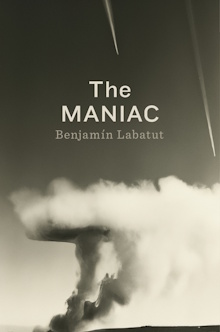I don’t think I even have a single film starring Brigitte Bardot in this blog though she’s an icon of French cinema. Here she appears in a film by Jean-Luc Godard which also includes Hollywood star Jack Palance and the famous German director Fritz Lang. This isn’t considered one of Godard’s best films but it is interesting in some ways and is easy to comprehend. As it is a film set during the filming of an adaptation of the Odyssey, the characters’ debates about their work applies directly to itself. Apart from this, there are no tricks with form and structure and so this is a relatively conventional film.
Continue reading Le Mépris (1963)All posts by Wan Kong Yew
The MANIAC
Again, venturing out of my usual habit of reading only fiction, I decided to read this so-called fictionalized biography which has been making the rounds. It supposedly recounts the life of the legendary polymath John von Neumann but is really more general than that. It’s full of anecdotes about the circle of genius scientists around von Neumann and most significantly traces how his ideas led to what is today called AI. It’s not really a popular science book as it’s very thin in terms of scientific facts and most of that is common knowledge. What it does offer is the inside perspective of many of these famous personalities, at least as imagined by author Benjamin Labatut. It’s debatable how authentic these stories are true in spirit according to what we know about them and that has to be good enough.
Continue reading The MANIACThe Last Stop in Yuma County (2023)
This is a tiny independent film that is its director Francis Galluppi’s debut and won over all the critics. It’s easy to see why from the get go with its charm, warm visuals and even the simple story is used to its advantage. It’s such an ode to cinema, wearing its influences on its sleeve, that it sometimes feels like an audition tape but it all comes together very nicely. Unfortunately it runs a little longer than necessary as it keeps piling on layer after layer of plot complications when it should have ended much earlier and that only exposes the thinness of its messaging.
Continue reading The Last Stop in Yuma County (2023)Harakiri (1962)
I keep adding these old masterpieces out of a sense of duty but I have to admit that I don’t always enjoy actually watching them. This is the second film by Masaki Kobayashi on my list and I will say that it is easily one of the best samurai films I’ve ever seen. Seppuku itself is now part of the popular vernacular and so hardly alien. Yet the film still succeeds in making it feel viscerally real, dissecting the practice bit by bit with a critical eye. I loved the slow buildup of tension through the extensive dialogue, culminating in explosive violence that literally tramples on traditional notions of samurai honor. I’d expected something much more reverential but this one really doesn’t hold back its contempt for the samurai warrior ethos.
Continue reading Harakiri (1962)Satisfactory
I’d skipped any posts about games for the past few months because I’ve been totally engrossed in this one and it took way longer than I’d expected to complete. I’ve since clocked up almost as many hours at this as Dirt Rally 2.0 and that’s a game I’ve been playing on and off for years! I’m kind of ashamed that it took me so long really as I kept doing things by hand for way too long and procrastinated over building large-scale infrastructure which would have saved me time over the long run. Still, this is very much the kind of game that everyone plays in their own way and by and large, I’m fairly happy with what I managed to build.
Continue reading SatisfactoryThe Taste of Things (2023)
We watched Vietnamese director Trần Anh Hùng’s debut film some time ago and nothing since because they didn’t seem notable enough. Now here he is with an outstanding film that all the more surprising because of how French it is. This is nothing less than a pure love letter to classical French cuisine that is simply overflowing with passion for food. The term food porn is now part of vernacular but this film takes it to a new extreme and even weaves food deeply into the relationship between the two main characters. I’m not a foodie so I’m left bemused by its audacity but I have to admire the director’s total commitment and the excellence of the execution.
Continue reading The Taste of Things (2023)The Teacher’s Lounge (2023)
This film won a ton of critical acclaim and gave my wife and I plenty to talk about afterwards, so that’s always a good sign. I suspected at first that this dealt with prejudice against immigrants in Germany but it’s so much more than that. It details the impossibly complex dynamics that teachers in first world countries must navigate in the modern world with all parties, fellow teachers, students, parents, all having a say in everything that they do. In the end director İlker Çatak doesn’t seem to lead us to any firm conclusions but it is a captivating look into the German classroom and it asks good questions.
Continue reading The Teacher’s Lounge (2023)





